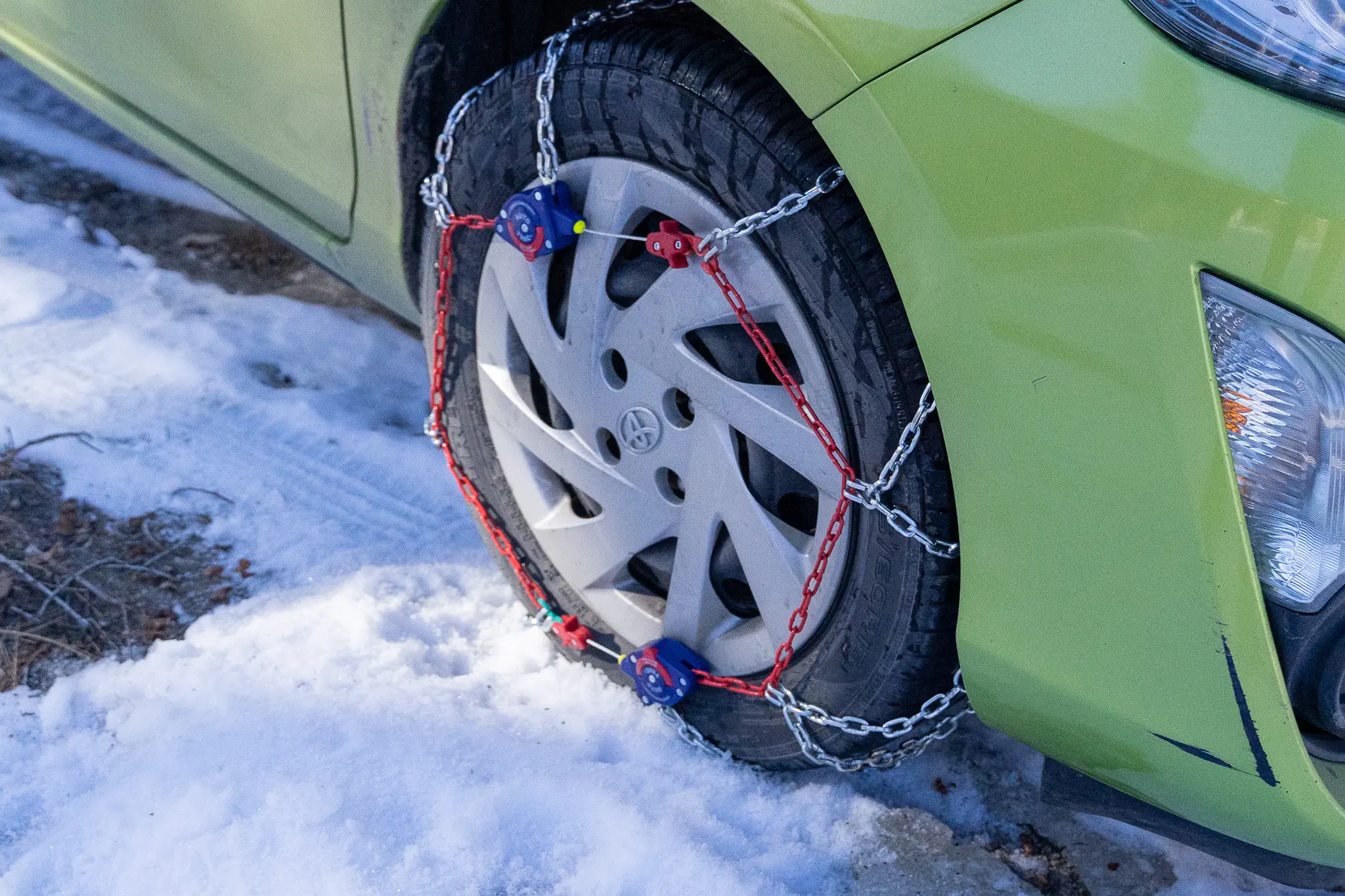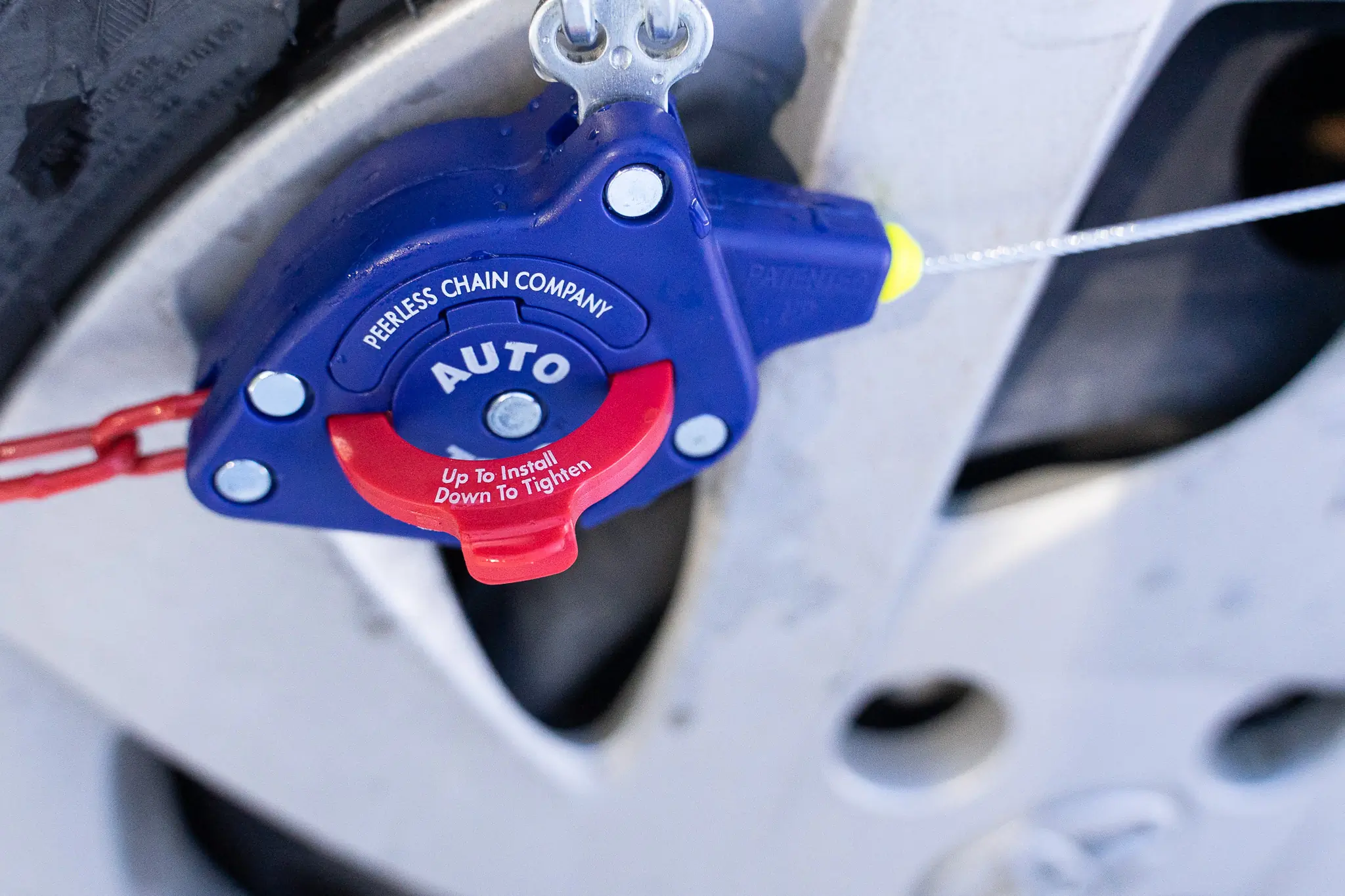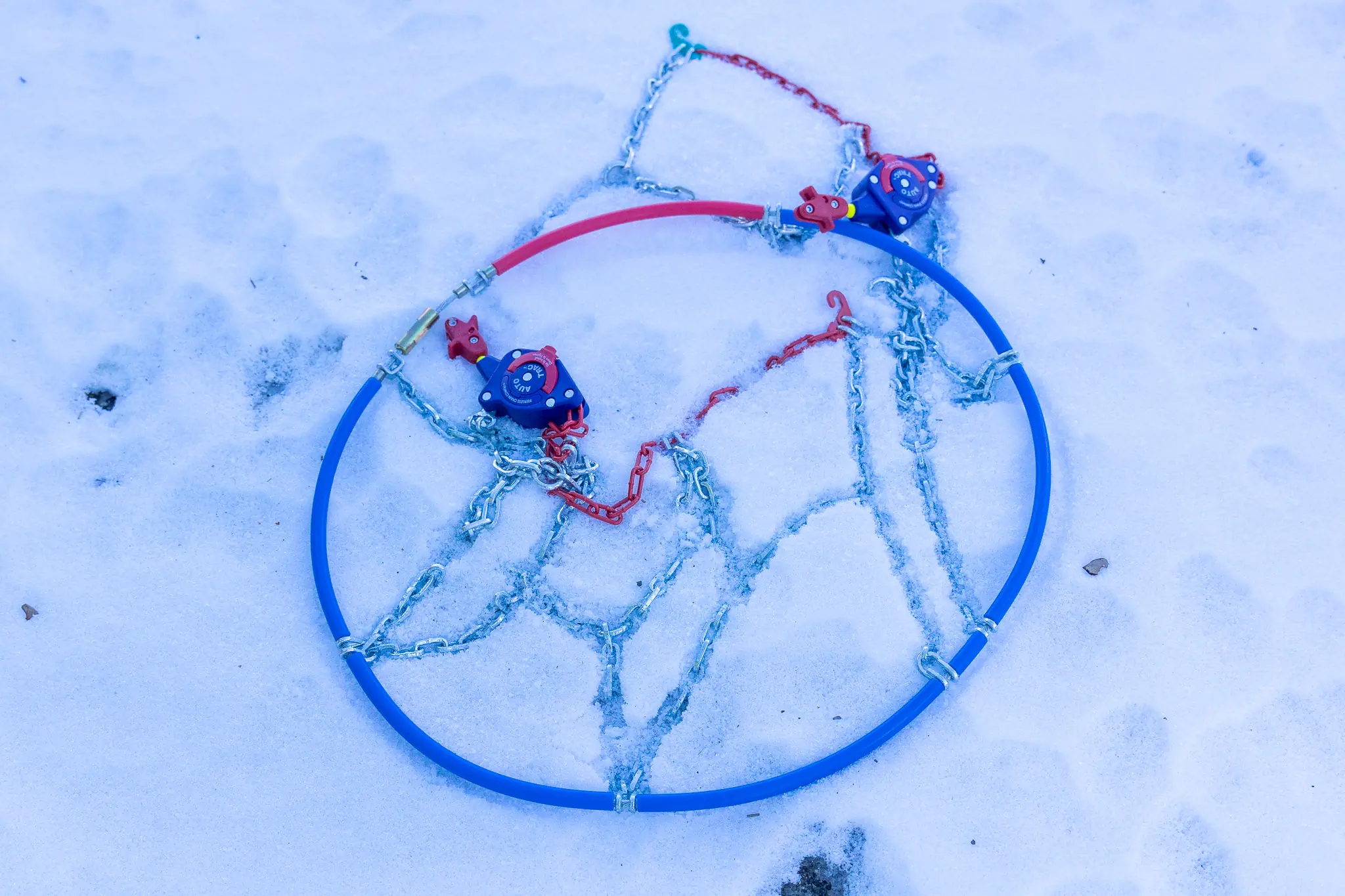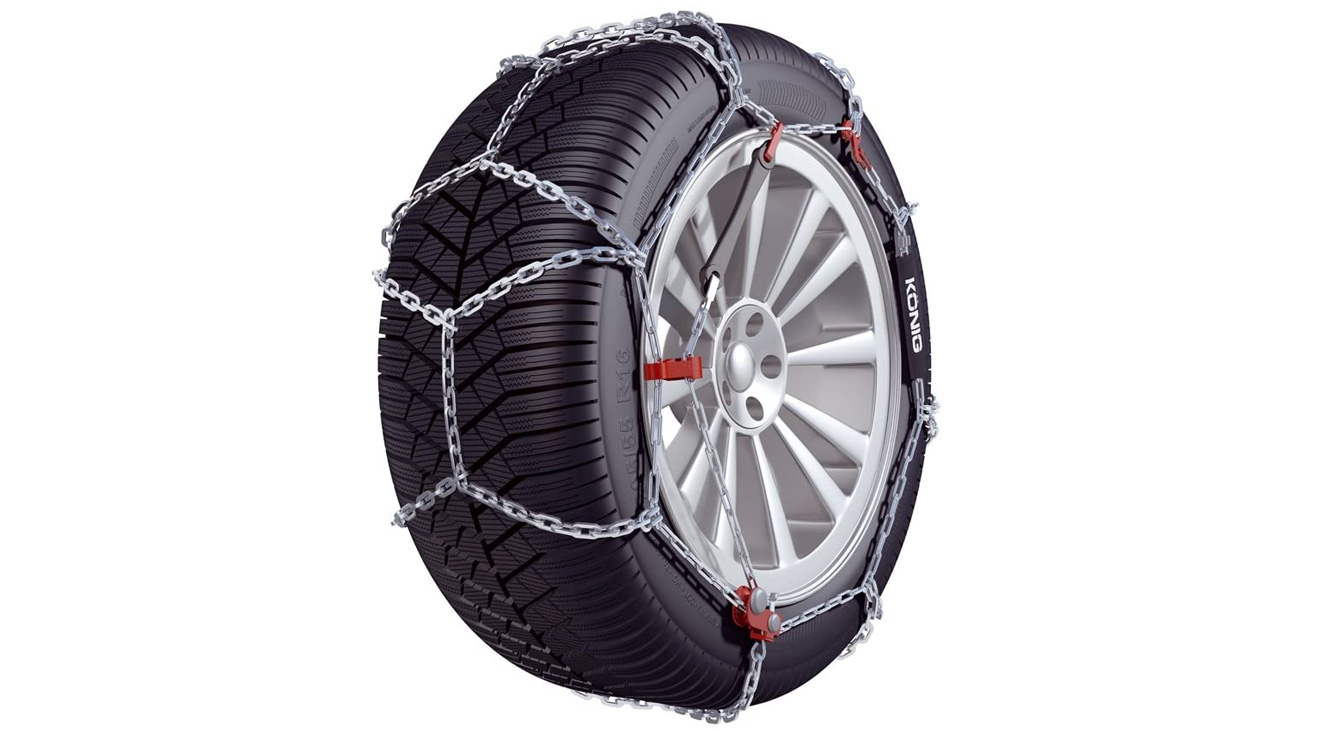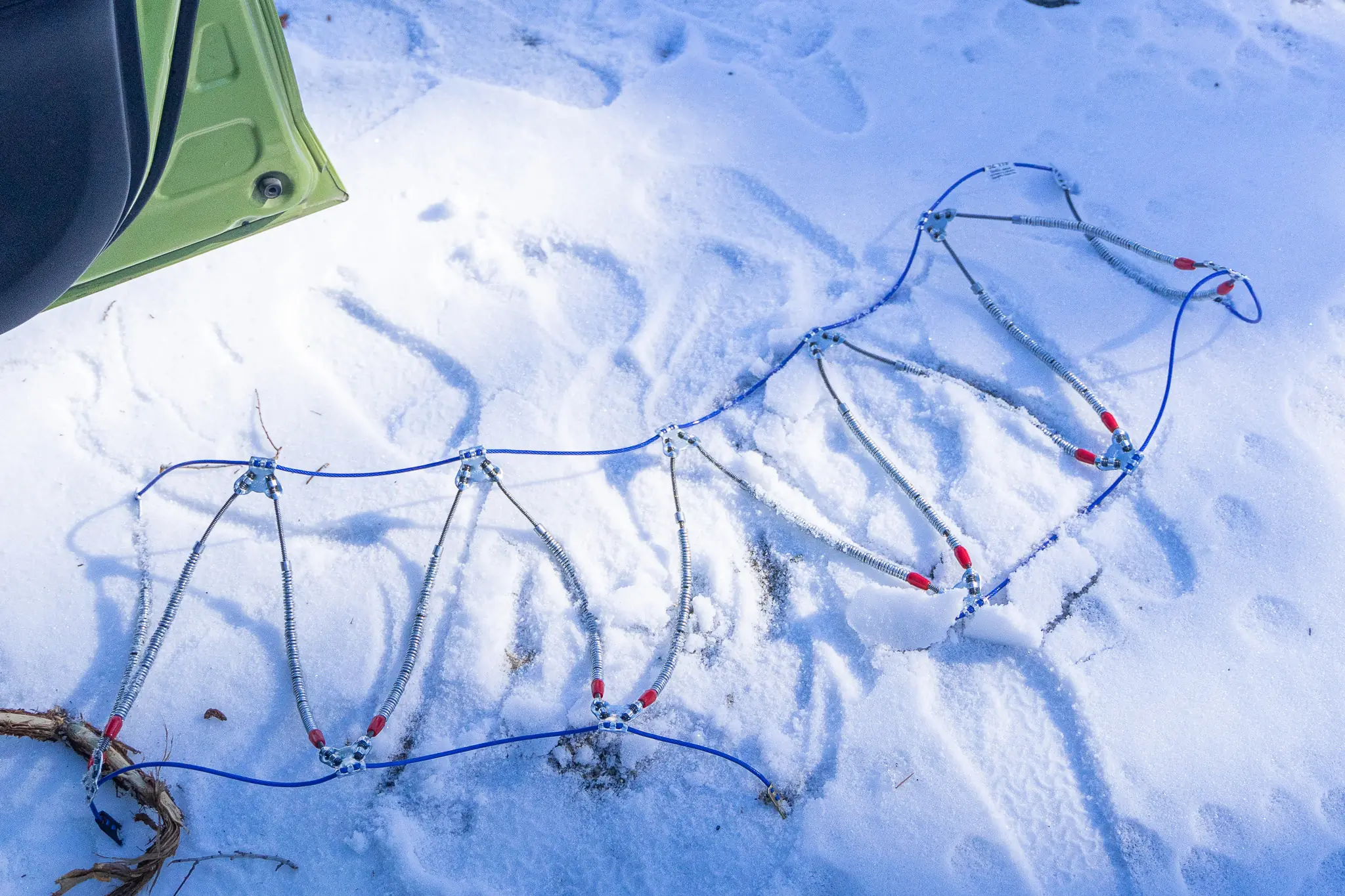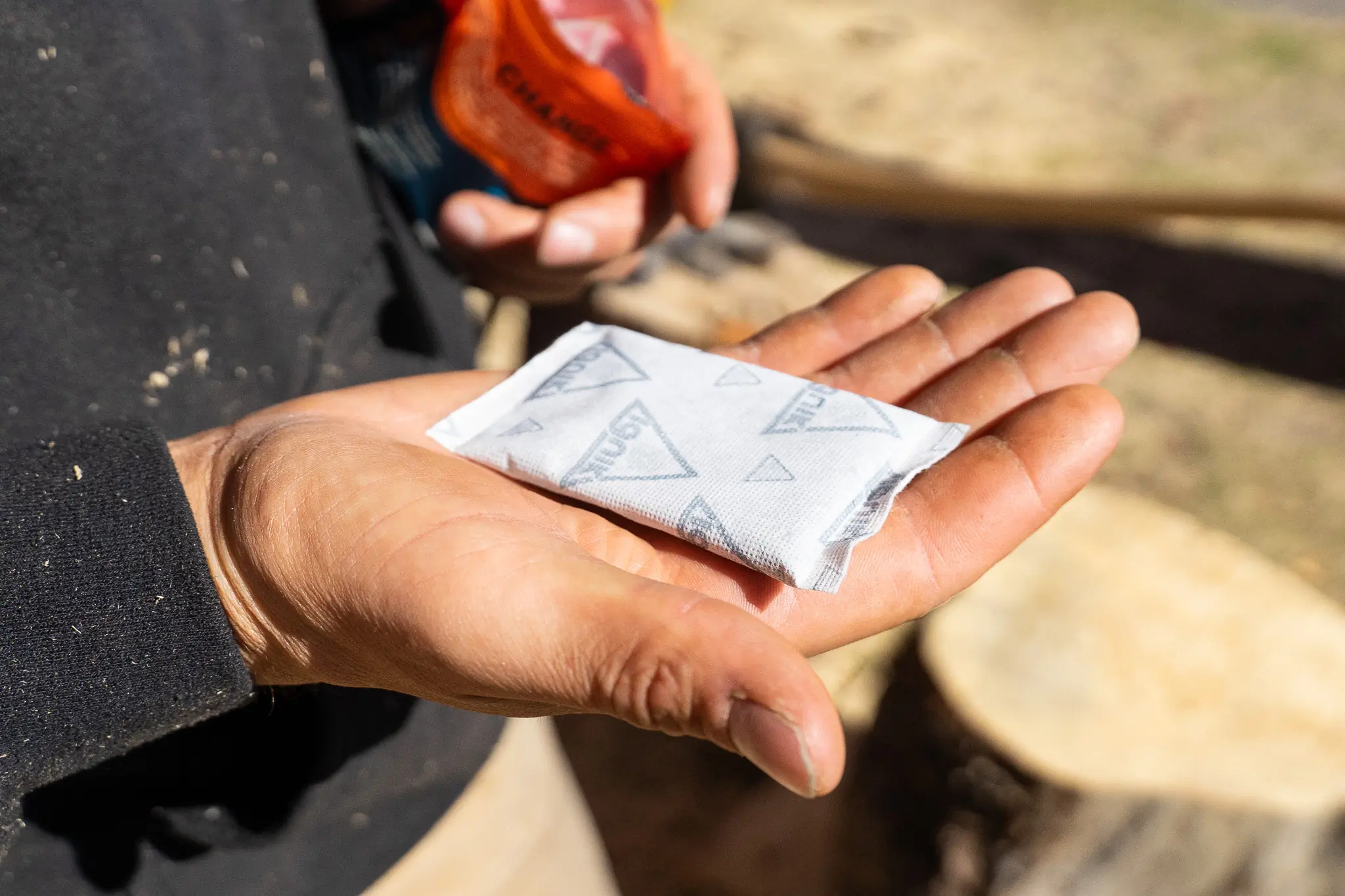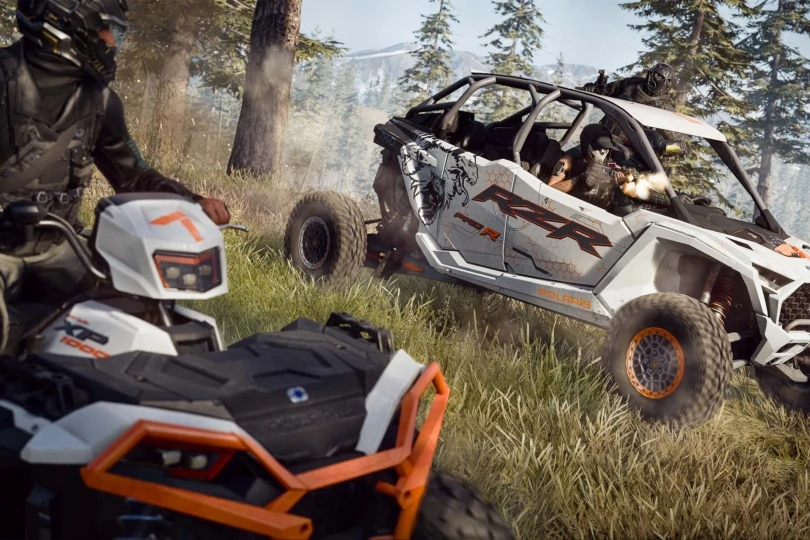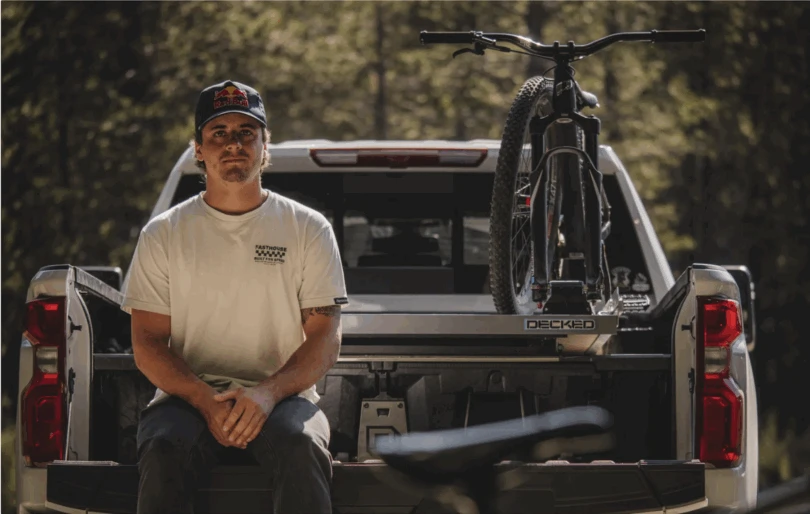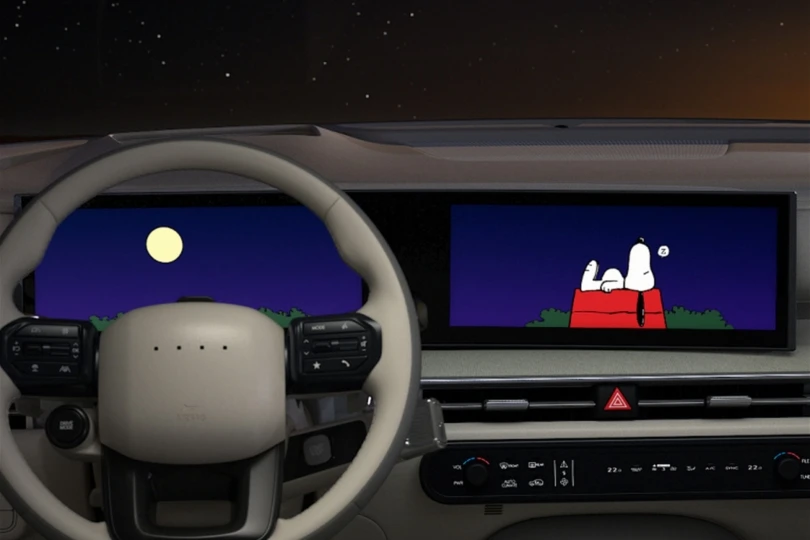While there are plenty of risky — and fun — activities to do during the winter months, icy roads undeniably present one of the greatest dangers of the season. The best tire chains for snow are a time-tested way to improve your grip on slick roads.
The editors at GearJunkie are spread throughout the mountain towns of California, Wyoming, and Colorado, where at a certain point every year, carrying tire chains is as natural as the changing of the leaves and the first snowfall. We’ve used, abused, and broken dozens of chains over multiple winters, and installed more than we can count on the vehicles of visiting lowlanders and hapless tourists.
We’ve compiled this list of effective and high-quality tire chains so that your next adventure in a winter wonderland can be safe and fun. Nothing ruins a ski trip like dangerously careening into a snow bank.
Always check the local weather forecast and road conditions. A lot can change between Pasadena and Mammoth Lakes, and in many cases, highway patrol will not let you proceed if you can’t prove you’re carrying a set of tire chains. Of course, the ultimate goal is safe winter travel in all conditions, and buying the best snow chains available for your vehicle is an excellent way to ensure this.
Editor’s Note: This article was updated on January 21, 2025, elevating the Peerless Auto-Trac Tire Chains to our best overall pick. They are compatible with many vehicles and are by far the easiest chains to install.
The Best Tire Chains of 2025
Peerless Auto-Trac
- Type: Chain
- Tension Adjuster: Yes, Auto adjusting
- Weight: 8.5 lbs.
Pros
- Simple, no-frills, and effective design
- Affordable price point
- Smooth riding on snow
- Generally easy to install for traditional tire chain system
Cons
- Chains could be thicker, resulting in better traction
König CB-12
- Type: Chain
- Tension Adjuster: Yes
- Weight: 7.89 lbs.
Pros
- Simple, no-frills, and effective design
- Affordable price point
- Smooth riding on snow
- Generally easy to install for traditional tire chain system
Cons
- Not the most durable chains on the market
- Hard to match to tire size online
Security Chain Company SZ143
- Type: Cable
- Tension Adjuster: Yes
- Weight: 1 lb.
Pros
- Very low profile on the tires
- Relatively easy to install
Cons
- On the more expensive side
- Installation can be finicky with small components in cold weather
- Chains can slip off if not installed properly
Security Chain Company QG2228CAM Quik Grip
- Type: Chain
- Tension Adjuster: No
- Weight: 6.5 lbs.
Pros
- Very durable
- Relatively easy installation
- Effective on all surfaces
Cons
- Tends to rust faster than some other chains
- Does not meet SAE Class S clearance requirements
Glacier Chains Tire Cables
- Type: Steel Rollers
- Tension Adjuster: No
- Weight: About 1 lb.
Pros
- Quick to install
- Lightweight and easy to pack away
- Great for vehicles with minimal wheel well clearance
Cons
- Provides less traction than more robust tire chains
- Not durable enough for long-distance use
ISSE Shark Snow Sock
- Type: polyolefin Fabric
- Tension Adjuster: Self Tensioning
- Weight: 2.25 lbs.
Pros
- Good alternative for drivers looking to avoid classic chains
- Easy installation
- Appropriate substitute for roads completely covered in snow
- Workaround for areas that do not allow classic tire chains
Cons
- Expensive
- Not the most durable product on the market
- Vastly shortened lifespan when driven on asphalt
Tire Chains Comparison Chart
| Chains | Price | Type | Tension Adjuster | Weight |
|---|---|---|---|---|
| Peerless Auto-Trac | $59-145 | Chain | Yes, Auto Adjusting | 8.5 lbs. |
| König CB-12 | $99-110 | Chain | Yes | 7.89 lbs. |
| Security Chain Company SZ143 | $51-212 | Cable | Yes | 1 lb. |
| Security Chain Company QG2228CAM Quik Grip | $111-135 | Chain | No | 6.5 lbs. |
| Glacier Chains Tire Cables | $59-67 | Cable | No | 1 lb. |
| ISSE Shark Snow Sock | $74-100 | Polyolefin Fabric | No, Self-tensioning | 2.25 lbs. |

How We Tested the Best Tire Chains
Putting on a pair of tire chains can be downright miserable. Imagine rolling around in slush puddles with frozen fingers, blindly grasping around your tires for a metal clasp. Maybe you’ve been on the road for a few hours and you’ve got a restless 3-year-old in the back seat. Needless to say, the family ski trip isn’t feeling much like a vacation yet. Our testers are all too familiar with this scenario, and we’re happy to show you another way.
Our Expert Testers
Tester Matt Bento has lived and worked in the High Sierra for over a decade, spending slushy winters in Yosemite Valley, shoveling snow in Mammoth Lakes, and commuting daily from Reno to South Lake Tahoe for a brief and grueling stint.
Bento spent some formative winters working in Yosemite National Park, commuting in and out of the park, moving from bare pavement at lower elevations to ice-covered roads in the nearly sunless valley. Local federal law enforcement takes chain control very seriously, and each day he needed to put chains on his way into the park and take them off on the way out.
He was often approached by other motorists who needed help with chain installation, so he’s installed about every make and model available, on a variety of vehicles giving him a solid foundation to evaluate the advantages and disadvantages of each style of tire traction device.
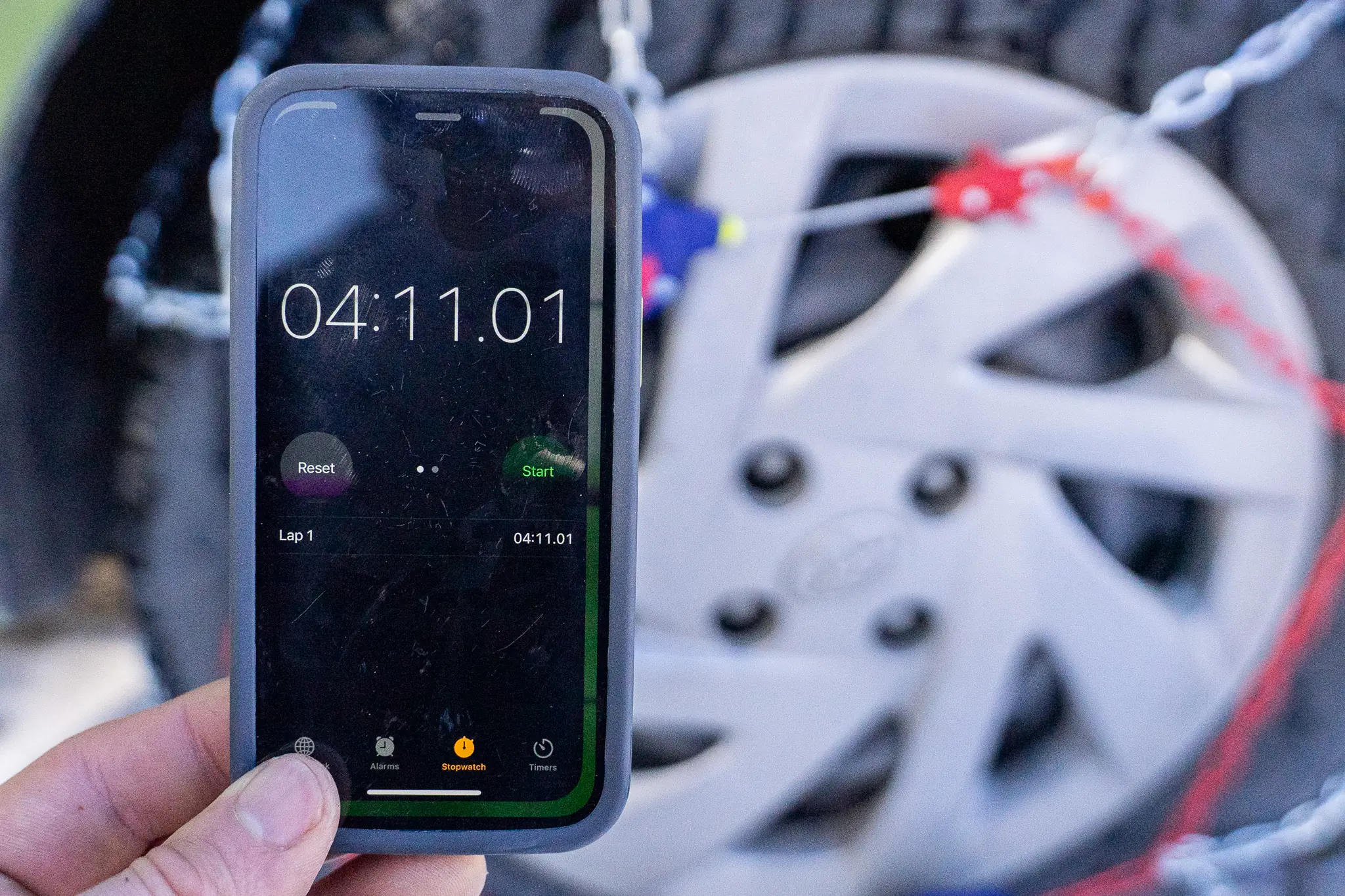
Our Testing Grounds
We test tire chains during winters in the Eastern Sierra of California. Our adventure-seeking testers move up and down Highway 395 all seasons seeking fresh tracks from Tahoe in the north and Lone Pine in the south, and inclement weather often means chain control and other driving restrictions.
The varying elevations provide plenty of opportunity to install and remove chains on our vehicles, often multiple times per trip. We evaluate traction and stopping power when navigating stop-and-go traffic in busy ski towns, and put around 50 miles on these chains in a season — plenty of use to reveal any durability issues.
The best tire chains for you are the ones that work well, fit your tires, match your clearance requirements, and are easy to get on and take off. Secondary considerations include durability and price. Our list of recommendations includes good options for a wide range of vehicles and drivers. As new and innovative models hit the market, we’ll be sure to test them to ensure our list always includes the best of the best.
If you’re staring down a big winter, consider going in on a set of snow tires. While they can’t offer the same traction as chains, they’re much better and safer than regular tires. Check out our guide to the best snow tires here. If you’ve never experienced winter driving, read our tips for winter drivers.
Buyer’s Guide: How to Choose the Best Tire Chains for Snow
Like any other piece of outdoor gear, the closer you are to purchasing, the more little details emerge that differentiate one product from the next. Choosing the best snow chains for your specific situation is especially important. It can spell the difference between a safe commute and getting into an accident on an icy road.
When deciding between different styles of snow chains, here are a few essential things to consider.
Tension Adjustment and Self-Tensioning
Many modern, higher-end chains on the market offer self-tensioning technology, which can help the installation process. As the vehicle moves and the tires rotate, self-tensioning chains will center and adjust with built-in ratchets.
In turn, this eliminates excess slack in the chain, which increases their overall performance on the snow. If you anticipate using your chains often and need to install and remove them multiple times in a week self-tensioning chains are the way to go. The Peerless Auto-Trac is an excellent choice if you’re looking for a self-tensioning set of chains.
There are plenty of assisted tensioning and manual tensioning chains on the market, as far as other options go. These chains are often more affordable and easier to install initially. You can get a chain over the tire and hook it together without it being under too much tension, drive a short distance, and then retighten. This requires an additional step, but can mean less time wrestling to the chains on in the first place.


Automatic Release
Many premium tire chains include an automatic release. If you drive over big mountain passes with variable snow conditions or cover many miles that may require chains, the automatic release function can be beneficial.
An automatic release can significantly decrease the amount of time you spend manually removing your chains while exposed to cold and potential hazards on the side of the road.
Sizing
No matter what style of chain you choose, it’s imperative to purchase the correct size. This is critical for the chains to fit appropriately and function as designed.
Thankfully, it’s easy to identify your tire size. It should be printed on the tire sidewall — giving dimensions for tire width, height ratio of the sidewall compared to width, and diameter.
Don’t worry too much about the size specifics. All you need to do is match the overall number to the model number provided by the chain manufacturer. On this list, all of the chains we’ve recommended are available in many different sizes.


Material
Tire traction chain technology has evolved over the past few decades. Some classic materials are still being used, and some newer innovations have been introduced to the market.
Generally speaking, higher-end metal chains are constructed with manganese, titanium, and nickel steel alloys. This offers superior strength and durability. If you drive a large truck or any kind of heavy-duty vehicle, we recommend chains made with extra burly materials. Middle-of-the-road and economy chains are generally made of hardened steel.
While metal chains typically provide more traction control than alternative materials, they can also cause more damage to roads and vehicles. To combat this, the industry has introduced rubber chains and snow socks. While they may not be the best choice for extreme environments, they’re certainly more friendly to your vehicle and the roads you drive on.
Weight
As you shop around for the right set of tire chains for your vehicle, you’ll notice differences in weight. Lighter chains will provide adequate traction and better fuel economy. And they’re easier to install, remove, and store.
While worse for overall fuel economy, heavier chains will provide much better friction and are usually more durable. Heavier chains are more cumbersome to transport, carry, and store than the lighter-weight alternatives.
Seeing as you will likely not be driving for more than a few miles at a time with chains on your tires, don’t get too worked up about fuel economy. Similarly, if you’re buying chains merely as an added winter driving precaution and don’t plan on using them often (or perhaps at all), don’t invest in the heaviest option. Regardless of your choice, safety should always be your top concern.


Price & Value
You can purchase a bottom-of-the-barrel-cheap set of chains to show the highway patrol officer at the chain control stop, but if you spend $90-150, you’ll get a functional set that can last for many seasons. Spending more will get you features like auto-tensioning, and the more expensive sets are generally easier to install.
Spend less, and you may need to do more finagling under your vehicle in the snow, but with a little practice, the installation will be manageable in any conditions (provided you bought the correct size.) Each price is listed as a range, since most models are available in many different sizes, with larger sizes being more expensive.
Budget
For $100 in the smaller sizes, the König CB-12 tire chains ($99-110) are simple and effective and have better traction than cheaper cable-style chain sets. You do need to lay them out and roll onto them, so a snowless surface makes installation much easier. The tensioning system is easy to use, but it’s not automatic and you may need to pull over and adjust them after a few miles.
The main downside to these chains is that they don’t meet class S requirements. This means the chains need a minimum of 1.46” of clearance from the tread facing side of the tire to your fender, and 0.59” at the side walls.
If you’re racing up to the ski hill in your Tesla or Mini Cooper, you need to go with the Glacier Chains Tire Cables ($59-67). While the traction isn’t as good (slow down, be careful) they have a much lower profile and are less likely to damage your vehicle. They aren’t as durable as actual chains, so don’t depend on them for longer distances and inspect them routinely for damage.
Premium
For over $125, you’ll start to see chain sets designed for longer distances and harsher mountain conditions. Folks who live in mountain towns and the surrounding areas know these are a must if they’re driving a smaller car or SUV, and when combined with a four-wheel drive truck, you can make it anywhere as long as the snow isn’t too deep (just watch out for everyone else).
If you have a truck or high-clearance vehicle, we recommend the Security Chain Company QG2228CAM Quik Grip Model ($111-135). These are burly chains available in larger sizes. They’re not the quickest to install, but there aren’t any tensioners to lose or break, and they provide the best traction. Store them dry and they’ll last many seasons.
For everyone driving sedans, sports cars, light trucks, and SUVs we recommend Security Chain Company’s SZ143 Cable Tire Chain ($51-212). It’s our favorite set that meets class S requirements, and they’ve proven much more durable than cheap cables while still being easy to install and less likely to damage your vehicle.
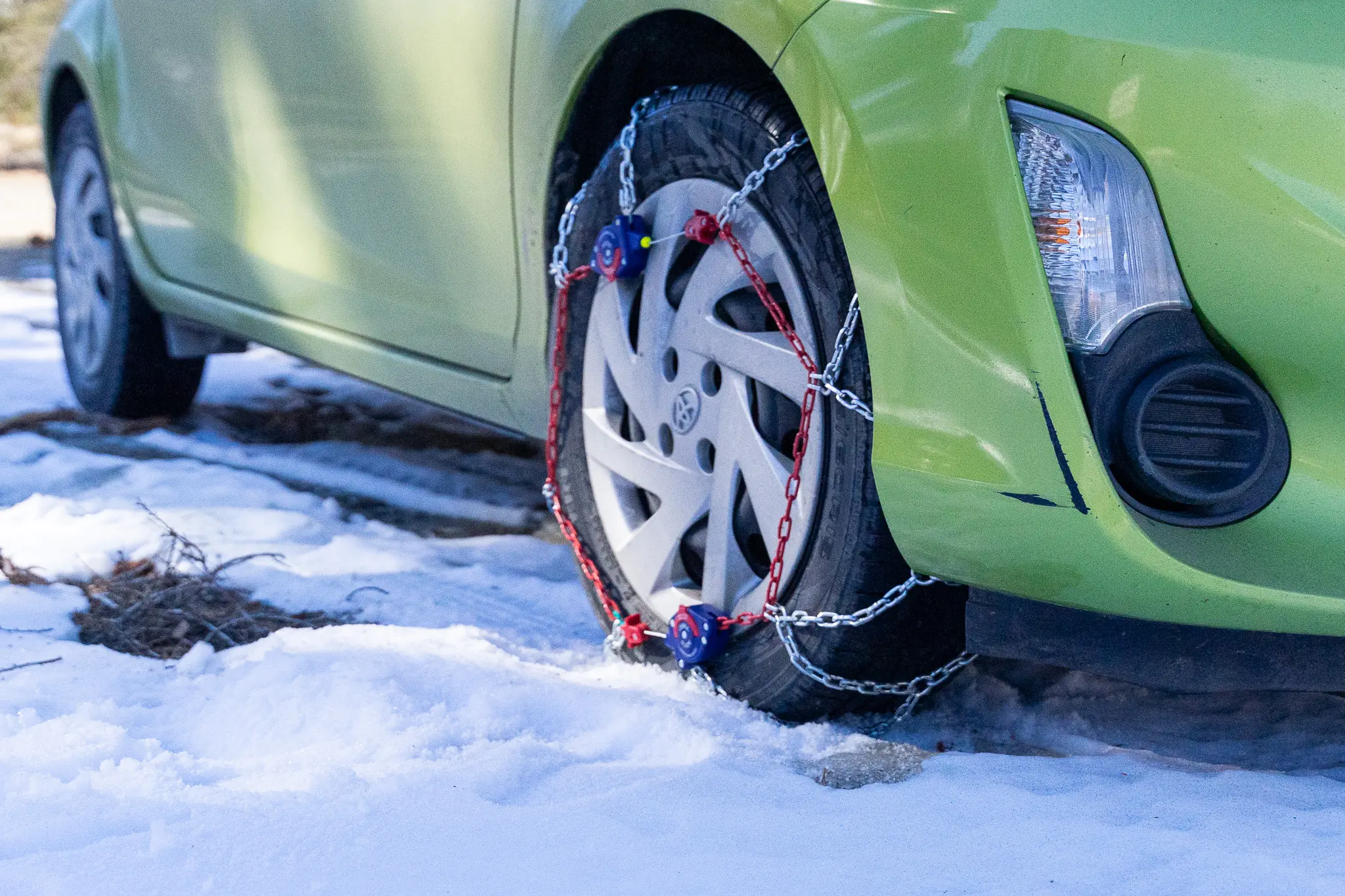



How to Install Snow Chains
Installing snow chains truly is a practice-makes-perfect type of skill. Every brand and style of the chain will install slightly differently. Each set of chains comes with a specific set of instructions, and there is a general method that all drivers should follow.
Practice
First and foremost, purchase the correct size chains for your vehicle. Ensuring that your chains are the correct size will prevent excessive frustration during installation. Once you have your chains in hand, we highly recommend that you practice installing them in dry and favorable conditions.
It will be much easier to throw on your chains in a subzero blizzard on the side of the highway if you’ve practiced! The more practice, the better.
As you make a plan to store your chains in your vehicle, build a quick winter emergency kit to go with them. If you get caught off guard and need to put chains on, it’s nice to know you have a set of gloves, a spare coat, a headlamp, and something to kneel on ready in your car.
Installation 101
When the time comes to install your chains, pull off to the side of the road. Make sure you bundle up in winter layers, put on your four-way flashers, and safely move to your targeted tires.
For front-wheel-drive vehicles, install snow chains on the front tires. And for rear-wheel drives, they will go on the back. If you have an all-wheel or 4WD vehicle, the chains will likely work best when installed on the front tires, but check the owner’s manual to be sure.
From here, all installations will differ slightly. It’s best to follow the instructions for your particular set of chains.
In general, you’ll unpack them, untangle them, and start wrapping them around your tire — attaching the connection points where appropriate. Repeat this process for both tires.
Once the chains are attached, you can slowly drive forward 10 to 20 feet to allow the chains to settle. If you do not have self-tensioning chains, get out, and tension them yourself to remove any slack. After you’re confident they are attached tightly and correctly, slowly pull onto the road and begin your drive.
It’s normal to hear and feel a slight rumble with most chains, but you should stop driving immediately if you hear any loud noises. Unusually loud noises or physical jolts can indicate your chains are not tight enough and are knocking against your wheel well. Pull over safely and readjust them.
Frequently Asked Questions
Like all pieces of outdoor gear, the correct answer is usually personal. Examining differences in things like material, link patterns, weight, style, and price allows you to make the most informed decision regarding the best snow chains for your situation.
If you anticipate frequently driving in bad road conditions and using your chains often, invest in a higher-end, more heavy-duty model. But if you’d just like to have a set of chains to keep in your car just for emergency purposes, maybe a more budget-friendly option will suffice.
Ultimately the decision is up to you, as each snow chain on the market has its own set of pros and cons.
Several alternatives to snow chains might work best for your vehicle, lifestyle, and the degree of winter conditions you expect to encounter. Tire straps are an easy-to-use traction device over snow chains. They strap on similarly to snow chains but have more flexibility.
Appropriate for cars, crossovers, and other small to medium-sized vehicles. Install them over the tires when you travel in snow or need extra traction on muddy, sandy, or rocky terrain.
Snow socks are better than tire chains for some people because they won’t damage your vehicle, and installation is more straightforward. Another advantage is that the ride is quieter without the vibration and rumble of bulkier traction devices. Snow socks over tires are recommended for short-term use and low-speed driving.
Snow socks can be a good alternative to snow chains in certain situations. In general, snow socks do not provide the same level of traction as traditional chains.
Snow sock fabric wears down more quickly than durable metal chain options. That said, snow socks are a great option for folks who don’t plan on regularly driving in the most demanding winter conditions.
Further, some vehicle manufacturers strongly suggest drivers do not use snow chains on certain models of vehicles. This is often an issue with low tire clearance, and snow socks can be a good remedy for this. They may not provide the same level of traction as metal chains, but snow socks are better than nothing for cars that cannot safely handle the increased volume created by chains.
There is the possibility that snow chains can mess up your car. However, they’re all designed to avoid such a negative outcome. In most cases, the responsibility falls on the installer or driver when cars get damaged by tire chains.
Snow chains need to fit your tires properly. If they don’t, damage to your wheel wells may occur while you’re driving. Additionally, if not installed in the correct manner, they can come loose and damage the underbody. When putting on your chains, check and double-check they are installed tightly and correctly.
All chains come with a driving speed recommendation — usually around 30 mph. Exceeding the recommended speed can break the chains and cause further damage to your vehicle. When driving with chains on your tires, be extra cautious if you’re passing over areas of bare pavement.
While the best tire chains for snow can cause damage, they’re engineered for traction and safety. If you install them as instructed and heed the manufacturer’s advice, snow chains shouldn’t cause you any trouble. If you’re concerned, consider snow socks as an alternative traction device.
Definitely use the best tire chains for snow on all four corners with all-wheel drive and four-wheel drive vehicles. In the case of FWD and RWD cars and crossovers, it’s much safer and easier to control if you have snow chains on all four tires. You can make do by installing them on the drive axle wheels.
Although, the significant difference in traction will cause oversteer in front-wheel drive vehicles and understeer in rear-wheel drive cars.
While the design of snow chains works best in packed snow or ice, they can also help in muddy situations. It’s not uncommon to lose traction when tire treads get packed with foreign material — snow, ice, or mud.
Chains act as an additional traction device and allow for more friction. Some snow chains translate better to mud than others, and individual manufacturers sometimes declare their chains’ effectiveness in the mud.
Don’t approach winter driving lightly. Thankfully, there are plenty of tools out there to help you navigate snowy and icy roads with safety and relative ease. Snow tires are a great asset in wintry, mountainous environments, but replacing a full set of tires is expensive.
While you may not need them, snow tire chains are a great tool to keep in your car when conditions get especially rugged.


